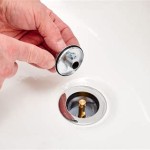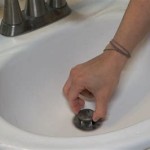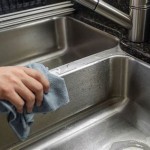Eye Wash Station for Sink: A Comprehensive Overview
An eye wash station for a sink is a critical safety device designed to provide immediate and effective irrigation to the eyes following exposure to hazardous substances. These stations are typically installed in workplaces and laboratories where there is a risk of chemical or particulate matter exposure. The primary function of an eye wash station is to flush contaminants from the eyes, minimizing potential damage and preventing long-term health issues.
The integration of an eye wash station directly into a sink offers several advantages. It allows for easy access to a readily available water source, simplifies installation, and often proves more cost-effective than standalone units. These sink-mounted stations are designed to deliver a controlled and consistent flow of potable water, ensuring proper and safe eye irrigation. The following sections will delve into the different aspects of eye wash stations for sinks, including their functionality, installation, maintenance, and regulatory considerations.
The design and operational characteristics of sink-mounted eye wash stations are carefully engineered to meet specific safety standards and guidelines. These standards, typically set by organizations such as ANSI (American National Standards Institute), dictate the minimum flow rate, water temperature, and duration of flushing required for effective decontamination. Adherence to these standards is paramount to ensure that the eye wash station provides adequate protection in the event of an emergency.
Key Points Regarding Sink-Mounted Eye Wash Stations:
Functionality and Design
The functionality of an eye wash station for a sink hinges on its ability to deliver a consistent and readily accessible stream of potable water. The design typically incorporates dual spray heads that are positioned to simultaneously irrigate both eyes. These spray heads are often equipped with dust covers to protect them from contamination when not in use. The covers automatically disengage when the water flow is activated, ensuring immediate usability in an emergency situation.
The activation mechanism is a crucial element of the design. Most sink-mounted eye wash stations employ a lever or handle that can be easily operated, even with impaired vision. The lever is designed to provide a continuous flow of water, allowing the user to keep their eyes open and fully exposed to the flushing stream. The design should also allow for hands-free operation after activation, freeing the user's hands to hold their eyelids open for thorough irrigation. This is particularly important when dealing with corrosive substances that can cause rapid and severe damage.
Furthermore, the design must consider the ergonomic aspects of the station. The spray heads should be positioned at a comfortable height and angle to allow for easy access and effective flushing. The water stream should be gentle enough to avoid causing further injury or discomfort, yet powerful enough to effectively remove contaminants. Many units incorporate flow regulators to ensure a consistent and controlled water flow, regardless of fluctuations in water pressure.
The materials used in the construction of the eye wash station are also important considerations. The station should be constructed from durable, corrosion-resistant materials such as stainless steel or high-impact plastics. This ensures that the station can withstand the rigors of a hazardous environment and maintain its functionality over time. The plumbing connections must also be robust and leak-proof to prevent water damage and maintain the integrity of the water supply.
The water temperature is another critical factor. ANSI standards typically recommend tepid water, generally defined as between 60°F (16°C) and 100°F (38°C). Water that is too cold can cause shock and make it difficult for the user to keep their eyes open, while water that is too hot can cause burns and further damage. Some eye wash stations are equipped with thermostatic mixing valves to ensure that the water temperature remains within the acceptable range.
Installation and Maintenance
Proper installation is essential for ensuring the effectiveness and reliability of a sink-mounted eye wash station. The installation process typically involves connecting the station to the existing sink faucet or plumbing system. The connection should be made by a qualified plumber to ensure that it is secure and leak-proof. The plumber should also verify that the water pressure and flow rate are within the specifications recommended by the manufacturer.
The location of the eye wash station is another important consideration. It should be located in an area that is easily accessible to employees who are at risk of exposure to hazardous substances. The station should be clearly marked with appropriate signage to ensure that it can be quickly located in an emergency. The path to the eye wash station should be clear and unobstructed, allowing for rapid access.
Regular maintenance is crucial for ensuring that the eye wash station remains in good working order. The station should be inspected on a regular basis to check for leaks, corrosion, and other signs of damage. The spray heads should be cleaned regularly to remove any debris or buildup that could obstruct the water flow. The water supply should also be flushed periodically to remove any stagnant water or sediment.
The frequency of maintenance inspections will depend on the specific environment in which the eye wash station is located. In environments with high levels of dust or contaminants, more frequent inspections may be necessary. It is also important to maintain a record of all maintenance activities, including the date of the inspection, the name of the inspector, and any maintenance or repairs that were performed.
In addition to routine inspections, it is also important to conduct regular testing of the eye wash station to ensure that it is functioning properly. The testing should involve activating the station and verifying that the water flow rate and temperature are within the acceptable range. The testing should also verify that the spray heads are delivering a consistent and even stream of water. Any deficiencies that are identified during testing should be promptly corrected.
Regulatory Considerations and Standards
Eye wash stations are subject to various regulatory requirements and standards, primarily established by ANSI standard Z358.1. This standard provides comprehensive guidelines for the design, installation, and maintenance of emergency eye wash and shower equipment. Adherence to these standards is essential for ensuring that the eye wash station provides adequate protection to employees and complies with applicable regulations.
The ANSI standard specifies the minimum water flow rate and duration of flushing required for effective decontamination. For eye wash stations, the standard requires a flow rate of at least 0.4 gallons per minute (1.5 liters per minute) for a minimum of 15 minutes. The water should be potable and delivered at a tepid temperature, as previously mentioned.
The standard also addresses the location and accessibility of eye wash stations. The station should be located within 10 seconds walking distance of the hazard and on the same level as the hazard. The path to the eye wash station should be clear and unobstructed. The station should also be clearly identified with appropriate signage.
Employers are responsible for providing and maintaining eye wash stations in workplaces where there is a risk of exposure to hazardous substances. They are also responsible for training employees on the proper use of the eye wash station and ensuring that they are aware of its location. Regular inspections and testing are essential for ensuring compliance with regulatory requirements and maintaining the effectiveness of the eye wash station.
Furthermore, it is important to note that specific industries and jurisdictions may have additional requirements for eye wash stations. For example, certain industries may require higher flow rates or longer flushing durations. It is therefore important to consult with the relevant regulatory agencies and industry experts to ensure compliance with all applicable requirements.
In conclusion, eye wash stations for sinks are a vital safety component in environments where eye hazards are present. Understanding their functionality, installation, maintenance, and the applicable regulations is crucial for ensuring workplace safety and compliance.

Faucet Mounted Eyewash Systems Eye Safe School Health

Spilldoc Curtain Booth Type Emergency Shower Eyewash Station With Waste Water Containment Sink Sdcbse304

Regency 17 X 15 Wall Mounted Hand Sink With Eyewash Station

Emergency Eye Wash Sink Haws 7660 Co

Plating Process Eye Wash Dual Use Faucet Mounted Emergency Eyewash Stations For Sink Made In China Com

Bradley Wall Mounted Eye Wash Station With Stainless Steel Bowl

Eyewash Portable Convenient Installation For Sink Faucet Emergency Eye Wash Station

Handsink With Built In Eye Wash Eagle Group News And Info For Our Trusted Partners

Fisherbrand Deck Mounted Eyewash

Regency 12 X 16 Wall Mounted Hand Sink With G1100 Eyewash Station







